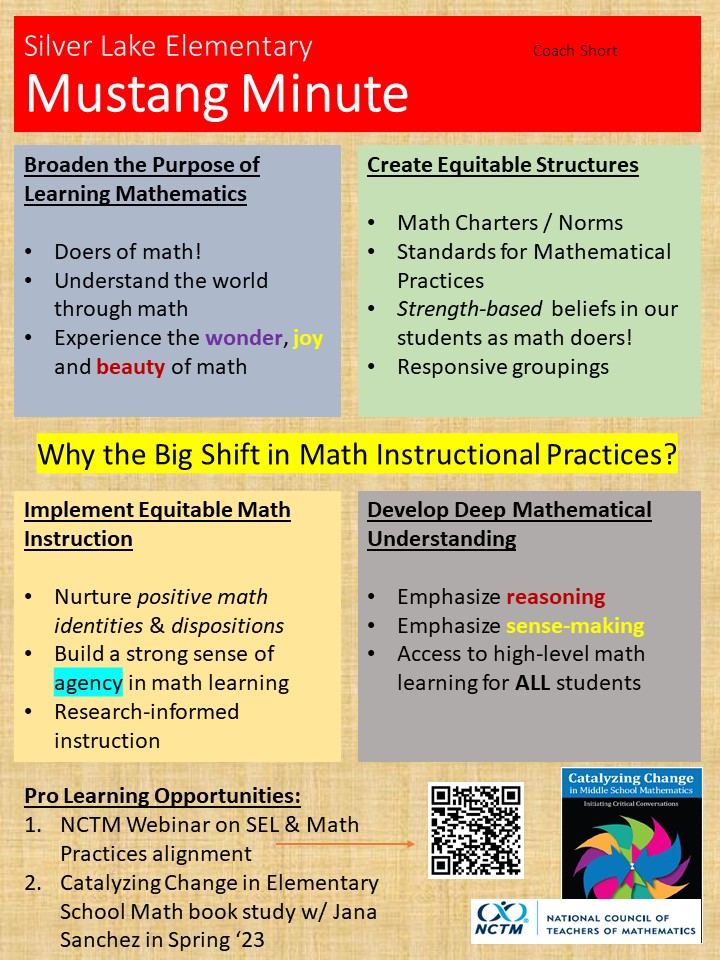A book study review thread…

Initial reaction: some of these recommendations require systemic change and some them can be addressed quite simply by a shift in practice by individual teachers.
For example, helping students develop a positive math identity, experiencing wonder, joy and beauty in mathematics, and finally, understanding and critiquing the world through mathematics, these are attainable goals for all teachers in classrooms of mathematics regardless of the system they work in, the curriculum or the incoming achievement level of their students. The same goes for implementing equitable math instruction, this should be teacher-determined, but with the support of quality professional learning by the district.
However, creating equitable structures in mathematics is a systems goal, particularly at the middle school and high school level. If we want mathematics to act as a gateway instead of a gatekeeper, the state and district policy makers need to look at prerequisite requirements and the math ladder generally, from pre-algebra on up to trigonometry and statistics. Teachers need the support of the system to ensure that students have access to math courses they deserve, and that attend to enrichment and intervention. This is a challenge without a simple solution. Same goes for creating a “common shared pathway”, this is systems work that cannot just be left to individual teachers operating independently in the system.
Chapter 3: An Asset-Based Approach to Education: What It Is and Why It Matters
First of all, you cannot discount how true this is, “deficit views are deeply rooted in the broader culture of mathematics education and are grounded in long-standing structures and practices.” Terms like “math gene” or “math person” are not said about reading, writing or other general ed subject areas. Knowing our own math identities and knowing that we need to take a strength-based approach to supporting students math identities is the first critical shift in pedagogy, as far as I’m concerned.
But this chapter also offers a couple practical instructional suggestions as to how to make that shift to a strength or asset-based approach:
1) “Positioning students as capable is not just a mindset but also an explicit practice that requires teachers to purposefully notice and highlight students’ strengths rather than attend to what they are lacking.” Mind shift to practice shift.
2) “Implicit racial attitudes inadvertently lead to lower teacher expectations for Black students, which often results in mathematics instruction that focuses on memorized facts and procedures and the use of a single strategy to solve mathematics problems.” In short, don’t pigeon-hole students into prescribed strategies and ways to solve, and don’t just make them calculators. Mind shift to practice shift.
